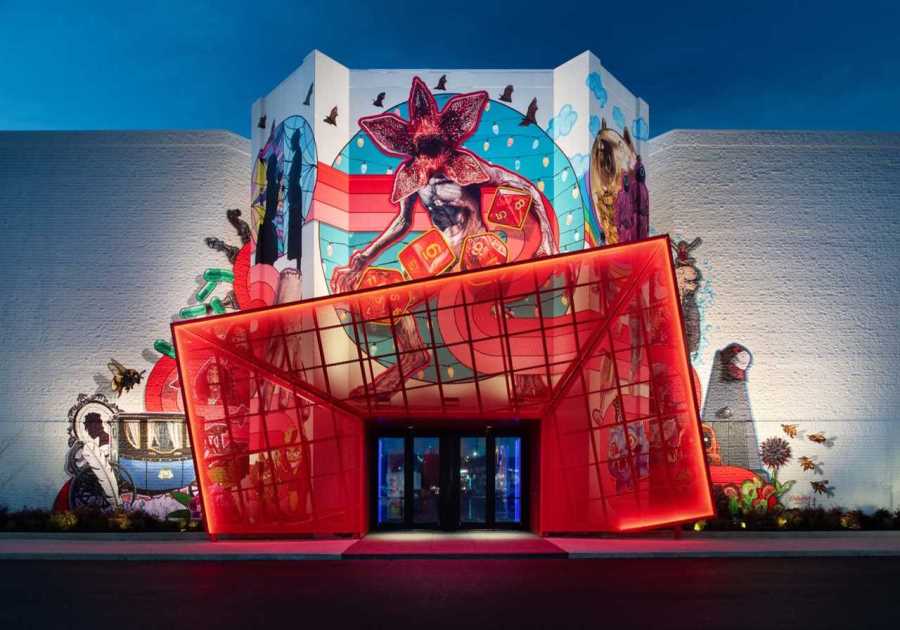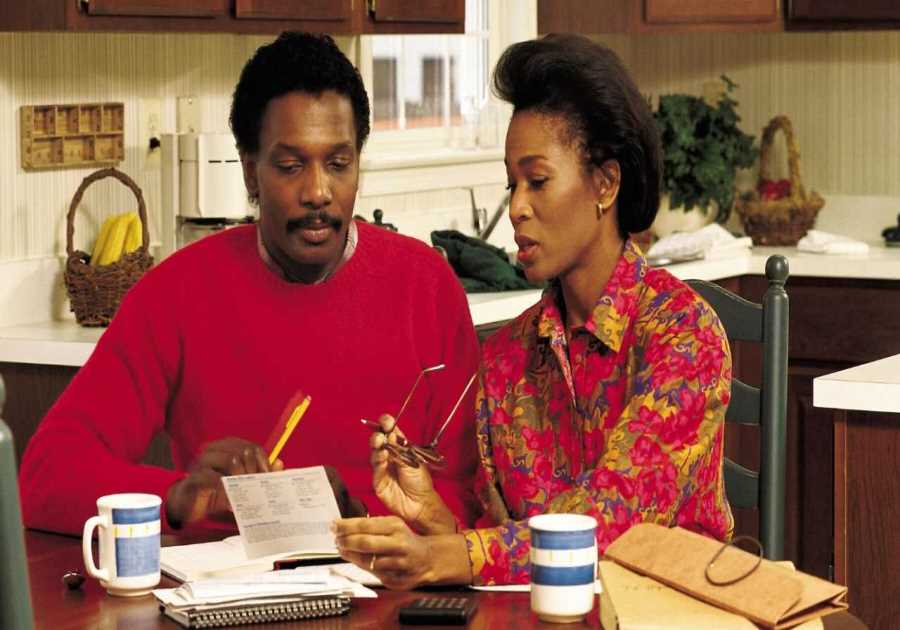"Nobody used to collect vintage Christmas tape dispensers, and now everyone does."
For Laurie Romanaggi, more is more when it comes to her collection of vintage Christmas decorations. This year alone, she’s filled her front porch with a legion of blow mold Santas, packed a Double Kay nuts cabinet with an array of decades-old ornaments, and covered her hallway with almost 100 retro Christmas boxes. She’s got cupboards stuffed with Santa mugs and slightly creepy ceramic angels, a mantle display of old glass tree-toppers, and a "gang" of plywood Santas artfully placed behind her living room sofa. It is, in essence, as if a 50- to 70-year-old Christmas product warehouse gracefully exploded all over her Portland, Oregon, bungalow, and it is glorious.
Romanaggi, who goes by Magpie Ethel on Instagram and Etsy, describes decorating her house for the festive season as a labor of obsessive love. She first started collecting vintage Christmas paraphernalia about 20 years ago, when her now-grown kids were still little, in an effort to add a little cheer to her home around the holidays. "I was always going to estate sales to hunt for things, because you never know what you’re going to find, and I just liked all the colors and the graphics," she says. "I like saving old stuff, and I can’t just collect one of something, so I always end up with a quantity."
Over the years, though, Romanaggi says she’s seen this niche interest in vintage Christmas paraphernalia—once relegated to fan blogs and the occasional regional convention—turn into a full-blown phenomenon. "Nobody used to collect vintage Christmas tape dispensers," she says, "and now everyone does." It’s the same thing with boxes of ’40s and ’50s Shiny Brite ornaments or midcentury blow mold porch decorations, both of which have seen their value take off in recent years. (These days, she even brings her collection of light-up plastic sculptures in from her porch every night, lest the Santas disappear at the hands of some opportunistic, vintage-loving thief.)
"I just like the old stuff," Romanaggi says. "I like how it looks, and I like the whimsy it inspires."
Sometimes the quest for classic Christmas is as much about authenticity as it is about holiday cheer. Midcentury-modern real estate specialist Adrian Kinney says that, as the owner of a Cliff May–designed midcentury in the Denver area, embracing the nostalgic Christmas vibe just made sense. "If we’re talking about preservation and about restoring these homes to what was correct in the ’50s and ’60s, then the holiday decor has to look correct," he explains. He’s enlisted designers to recreate plywood cutouts of the stop-motion Rudolph characters to put outside his house, and he’s sourced aluminum trees, bottle brush accessories, and even a vintage color wheel for his home’s interior.
His decorations, coupled with the strings of vintage-style Christmas lights he has lining the low-slung roof of his home, really help carry an appropriately retro feel throughout. "In these types of homes, there’s so much glass, so the reflections of the lights and the decorations really lift your holiday spirits," he says.
For Leben Riebe, another vintage holiday item collector, decorating his 1940s-era Fort Worth, Texas, home with tinsel-strewn trees and antique ornaments is also an exercise in nostalgia. It helps him feel connected to his grandparents, who he says were "pretty avid decorators."
"These types of [vintage] decorations remind me of a different way of living where things are more colorful and exuberant, and there’s a lot more attention to detail," he explains. "It feels more homey, cozy, and comfortable, and I love the layers of colors, details, and patterns."
Riebe says he’s especially enamored with the way Christmas looks in old photographs—and in particular the way Christmas trees looked in the ’40s, ’50s, and ’60s. "Most of the trees now," he says, "by the time they’re on a lot, they’ve been sheared into a kind of conical shape. There’s nothing wrong with that, but I love the old open look, because you can really hang a lot of ornaments and they have room to shine. The lights have spaces to light up, and tinsel was very common, especially if you didn’t have a lot of lights on the tree."
To Riebe, that space to reflect and shine is important, as is his choice of vintage or vintage-inspired lighting, because traditional incandescent bulbs are, as he puts it, "basically little fires, and we’re all drawn to that light because it feels natural, warm, and cozy." In recent years, he’s been opting for Tru-Tone Bulbs, which classic Christmas enthusiasts love because they look like the lights Grandma hung up each year, but, because they’re actually LEDs, are both energy efficient and cool to the touch.
Tru-Tone cofounder David Andora says he created the bulbs because, as a creative and designer working on window displays, parade floats, and sets in nightclubs, he found himself longing for the look of classic ceramic bulbs, but unable to source enough of them. Together with his partner, he set out on producing a run of bulbs, thinking he’d be able to break even by selling them to similarly minded creatives and Christmas enthusiasts. The response was overwhelming, though, and in the three years since the brand’s launch, Tru-Tone has routinely sold through all its stock long before Christmas. (They’ve still got product in stock this year, for the first time in recent memory, a feat Andora attributes to investing every bit of profit the company has made back into production.) "We get some really great, incredibly emotional responses from customers," he says. "When you see our bulbs in person, you realize how unique and fun and wonderful they are. They make you feel happy, and their warm glow embodies the whole concept of nostalgia for Christmas."
Perhaps we’re all just trying to recapture the Christmas that we remember as a kid. Jeff Carter, a Christmas lighting historian, certainly adheres to that theory, saying, "We all want to go back to our childhoods, and to that happier, simpler time. Whether it was actually happier or simpler is up for debate, but it was to us as six or seven year olds because we didn’t pay bills, we didn’t have a mortgage, and we just showed up to get Christmas presents." That quest for nostalgic comfort gets even stronger, Carter argues, during times of global strife and economic hardship. "When there’s uncertainty, people try to go back to their roots," he says.
In his own home, Carter says, that quest for nostalgia manifests itself in his Christmas tree. He buys one too tall for his actual living room, then lops off the top few feet, thus creating the lush width and proportional vantage point he had looking at his family tree as a child. By doing this, he explains, "there’s a whole wide space right where I’m looking, just like when I was eight."
Top photo by Jena Ardell/Getty Images
Related Reading:
Millennials Are Coming for the Tiny Collectible Christmas Village
How ’40s and ’50s Holiday Films Helped Define the Quintessential Christmas "Look"
Read More
By: Marah Eakin
Title: Vintage Christmas Collectors Have Inspired a Revival
Sourced From: www.dwell.com/article/vintage-christmas-collectors-have-inspired-a-revival-d50408e1
Published Date: Fri, 22 Dec 2023 17:06:48 GMT
.png)





